Blood rituals, zombies and mysterious dolls - this is what we mainly associate with voodoo today. This Haitian-born belief system is understandably arousing great curiosity. As intriguing as the mysticism surrounding voodoo, however, is also the history of the religion's origin and how it influenced the face of the entire region.
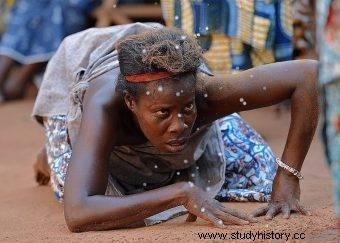
Bloody rituals, zombies and mysterious dolls - this is what we mainly associate with voodoo today.
It all starts in 1510, when the first ship with African slaves arrives in Haiti. The black people brought into the new world - contrary to what slave traders think - are not just mindless labor. Taken out of their environment, they still remember the culture and religion of their ancestors. In the slow process of amalgamating old African beliefs, Caribbean Indian rituals, and Christianity, a unique religious blend will emerge.
Slave Bay
The anthropologists studying the Haitian community make it fairly clear about its lineage. The descendants of today's black Haitians were mostly peoples living in the lands on the Gulf of Guinea:Yoruba, Dahomey and Fon.
In the sixteenth and seventeenth centuries, they will be gradually brought to Hispaniola (the original name of Haiti), because the indigenous people, the Arawak indians, cannot endure the hardships of living under the yoke of the Spaniards . As with other Indian tribes, slave labor and European imported diseases are decimating the indigenous people.
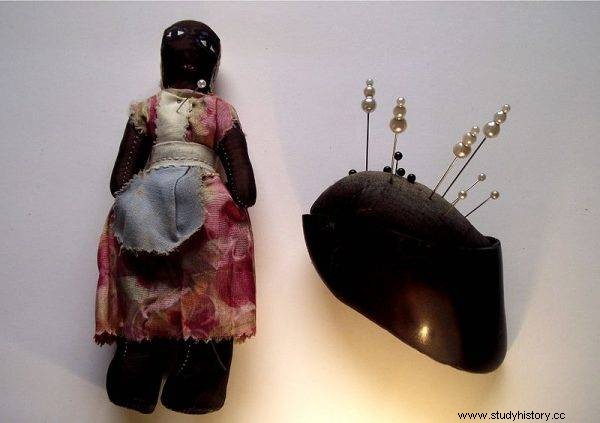
Voodoo doll
Deforestation, work in mines or sugar cane plantations make Haiti a real hell on earth for black people. However, their African religion gives them some relief and support. What characterized her is great openness and ease of adding elements of other beliefs. The rituals of the Caribbean Indians and the Catholic religion of white masters are slowly being woven into the beliefs of slaves. Professing one religion does not mean that you are forbidden from practicing the other. Baptized by Catholic missionaries, slaves by day humbly participate in Christian rituals, and secretly, under the cover of night, practice the old African witchcraft .
Black Hell
Due to the harsh working and living conditions, slaves repeatedly rebel or flee to the mountains in the center of Haiti. The first revolt did not take long, as it broke out in 1522 (12 years after the arrival of the first black slaves in Haiti).
High in the mountains, fugitives establish settlements called palenque, in which they can practice their beliefs without any obstacles. The rituals are accompanied by wild dances, and the rumbling of drums carried among the mountains (a constant element of the Haitian religion) must arouse real fear in the colonizers . In 1697, the Spaniards in Haiti were joined by the French who took over the western part of the island. Over time, they completely ban all kinds of ritual dances and religious gatherings ( calendas) .
Soon, even for possessing amulets, figurines or other fetishes related to voodoo, slaves are subjected to cruel punishments. Skinning, burial alive or castration are just examples . In the meantime, sugarcane cultivation intensifies and slave labor becomes even harder. This results in a significant increase in mortality among blacks, who live in captivity for an average of only 10 years.
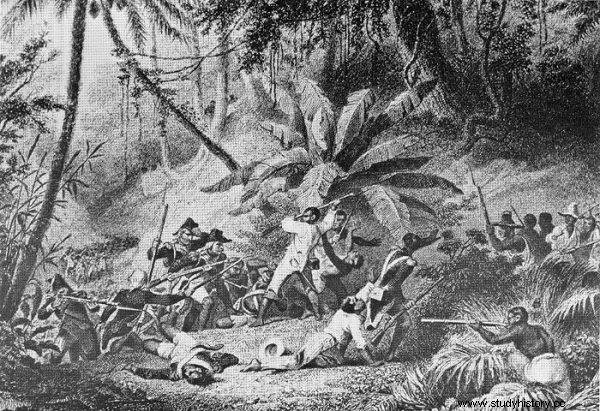
The revolution in Haiti finally breaks out in 1790, and one of the key elements that will hold all the insurgents together will be the voodoo religion.
At the beginning of the 18th century, the approaching conflict was felt more and more on the island. To keep slaves in check, the white masters begin to apply even stricter measures of discipline. The French and Spaniards fear more and more the numbers of blacks, their rebellion, and the incomprehensible religion they secretly profess.
One of the first black leaders to get white under their skin will be Francois Mackandal. In the years 1751–1757 he commands a large-scale sabotage action against French growers. His death at the stake in 1757 only temporarily calms the situation on the island. The revolution in Haiti finally breaks out in 1790, and one of the key elements that will hold all the insurgents together will be the voodoo religion.
The voodoo revolution
During the fights, the black slaves put up a fierce resistance to the French, the Spanish and the English. Insurgents in the fight are actively supported by voodoo priests ( hungani) who proclaim that the souls of those killed in the fighting will return to the land of their ancestors. The beginning of the Haitian Revolution is also an important stage in the process of shaping this belief.
Great importance is attached here to a semi-legendary event that took place on August 14, 1791. One of the first chiefs to stand and a voodoo high priest called Boukman was about to perform a solemn ceremony.
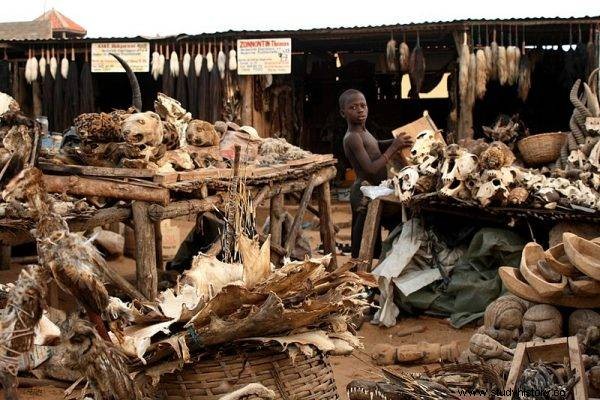
Figurines and fetishes related to voodoo
According to the legends, at the key moment of the mass, a huge storm broke out, and an old mysterious woman appeared at the site of the ritual. She sacrificed a black pig, whose blood was to be drunk by all participants of the ceremony. A few days after this incident, the scales of victory would begin to tip over to the slaves. After several years of fighting, in 1804 the insurgents finally achieved success. Haiti became the second country in America (the first was the United States) to defeat the colonial state and gain independence.
The Polish legionnaires who landed in Haiti in 1801 had to fear a deadly climate and tropical diseases more than they believed, but it is certain that the Haitian religion had a very large contribution to the final success of the insurgents. Even after independence, when the political situation in Haiti changed very dynamically, voodoo continued to be a strong bond between everyone living on the island. Soon, this religion would enter its final stages of development, leave Haiti, and take on the qualities it is known for today.
American gods
Similar to Haiti, the process of mixing old African religions with Indian beliefs and Christianity took place throughout the Caribbean and South America. For example, candomble and umbanda were born in Brazil, santeria was born in Cuba, obeah in Jamaica, and spiritual baptist in Trinidad and Tobago.
Of all these beliefs, however, voodoo became the most popular and spread from Haiti to other parts of America. One city in particular had a great influence on its final shape. It was New Orleans, which in the 19th century became the new voodoo capital . This happened thanks to Marie Laveau also known as the queen of voodoo.
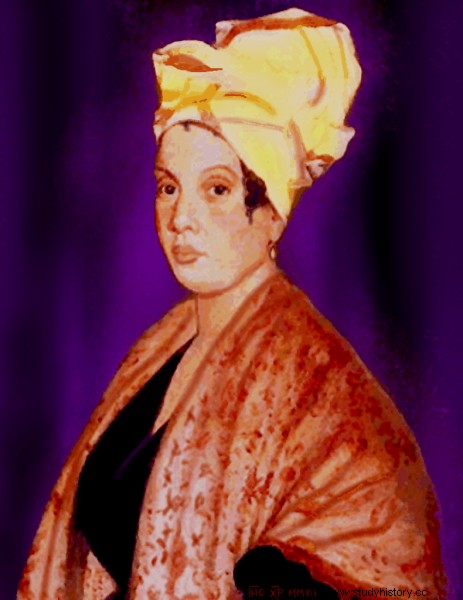
New Orleans became the new voodoo capital in the 19th century. This happened thanks to Marie Laveau also known as the queen of voodoo.
She was a mulatto girl who was born in 1794 as the daughter of a white farmer and a black woman. Her first husband died 7 years after their wedding, and Marie soon became the mistress of an influential French aristocrat, Louis Christophe Deumina de Glapion. From an early age she was involved in the voodoo cult and over time became its great priestess ( mambo).
Voodoo followers did not enjoy a good reputation in the New Orlen community at the time and were considered by many to be devil worshipers ( Papa la Bas) . Marie decided to change the social perception of voodoo and incorporate even more elements related to Christianity into it. Its elements had already become quite strongly embedded in the beliefs of Haitians, and the most important voodoo deities were depicted as the God of Christians and Catholic saints.
Nane Buluku was identified with God the Father, and Orishala - as the god of mercy - was associated with the cult of the Mother of God. Shango became St. John the Baptist, while Legba was depicted as St. Peter. The serpent-god Damballah occupied a special place in the pantheon of voodoo gods. He, in turn, took the form of Moses as the creator of the cosmos and of humans.
Marie Laveau decided to include other Christian elements in voodoo. Catholic devotional items such as crosses, statues of saints, and holy water have become part of New Orleans rituals . Hated by the Catholic Church, Laveau started a kind of marketing campaign for the Haitian religion, and the voodoo fashion gradually grew. At the end of her Laveau, however, she repented, returned to the bosom of the Church and distanced herself from voodoo.
Voodoo People
The process of voodoo formation and development is a vivid reflection of the history of the Caribbean and the Americas. The Haitian religion is marked by the slave trade, decolonization process and has played an important role in domestic politics even in the recent history of Haiti. François Duvalier, the autocrat who ruled Haiti from 1957 to 1971, made it the state religion.
Duvalier, also known as Papa Doc, based his rule on the activities of the secret and extremely brutal Tonton Macoute police (named after one of the evil spirits trapping naughty children). Both Papa Doc and Tonton Macoute were immersed in worship. Duvalier changed the flag of Haiti and gave it the colors associated with voodoo - black and red.

François Duvalier, the autocrat who ruled Haiti from 1957 to 1971, made voodoo the state religion.
Many Haitians believed that he himself was an evil spirit called Baron Samedi (Mr. Saturday) and that he could turn his political opponents into zombies . He also had the support of traditional priests, whom he used to spread state propaganda. Tonton Macoute, on the other hand, were responsible for spreading an atmosphere of fear and terror. They did not receive any government salary, but lived off what they robbed themselves. They murdered innocent citizens as well as Papa Doc's political opponents.
Papa Doc's son, Jean Claude Duvalier (known as Baby Doc), continued his father's policy without major changes since 1971. His rule ended in 1986, when he was expelled from the country as a result of another Haitian revolution. The period after the fall of Baby Doc was understandably marked by a temporary decline in voodoo popularity, but after a brief crisis of faith, the Haitians returned to their ancestral religion.
Today, voodoo has partially lost its religious dimension in the collective consciousness. What it gained, however, was its constant presence in contemporary pop culture. Mystical rituals, magic spells and a mysterious aura meant that it began to appear more and more often in adventure literature and films. However, it is often forgotten that this religion is not only a tourist attraction in New Orleans and Haiti. It is an ever-living belief system that has left a very strong mark on the turbulent history of the Caribbean.
